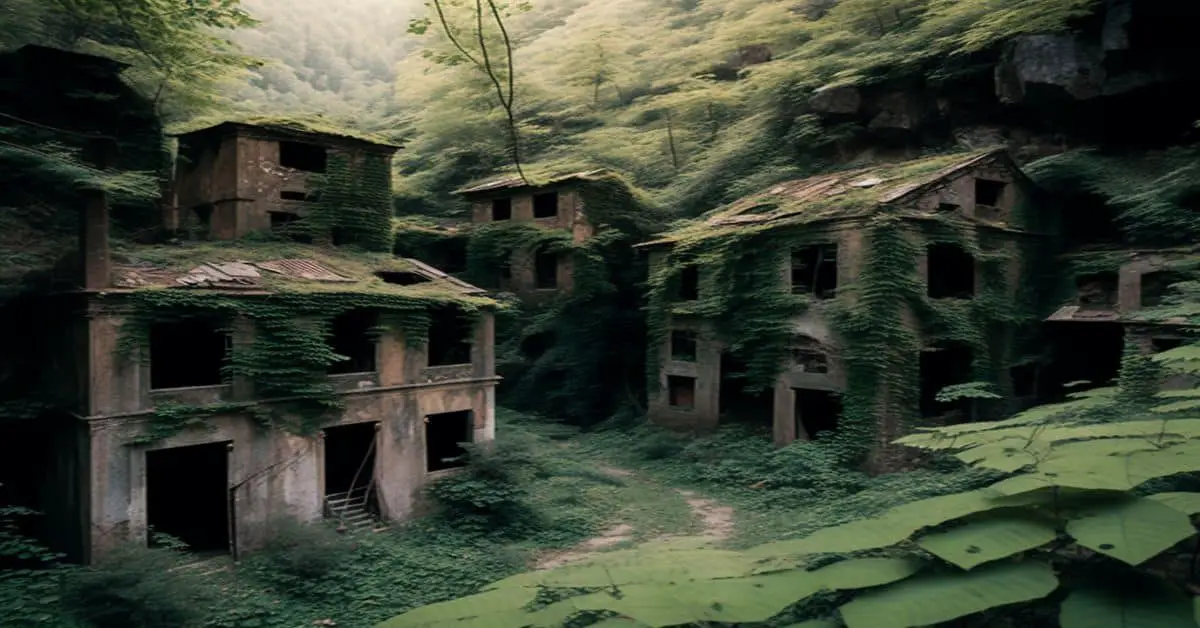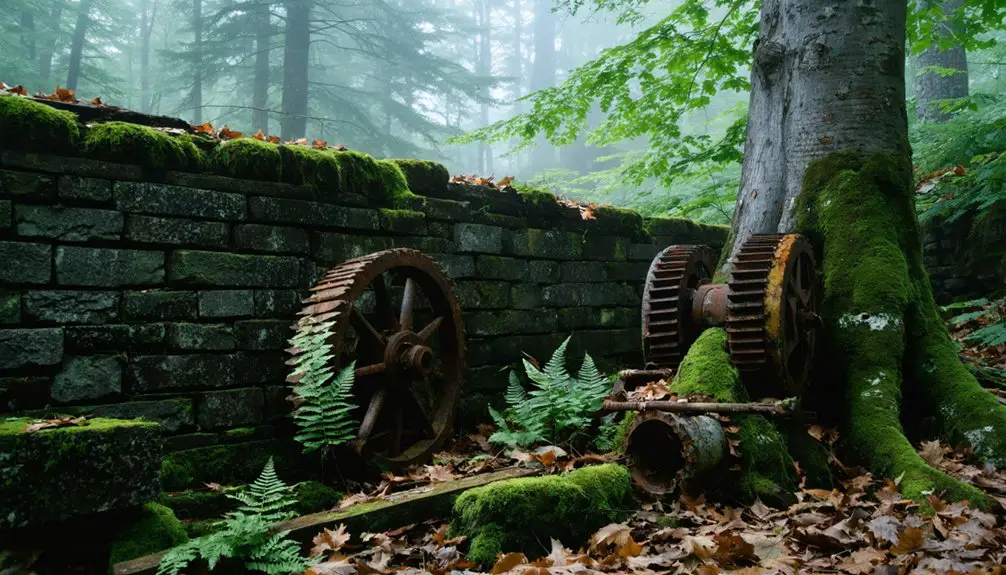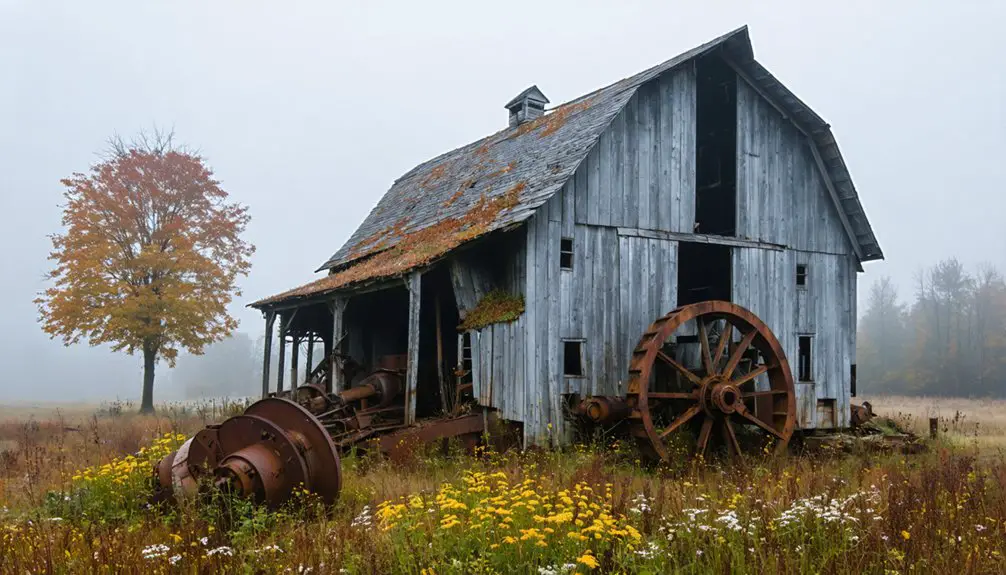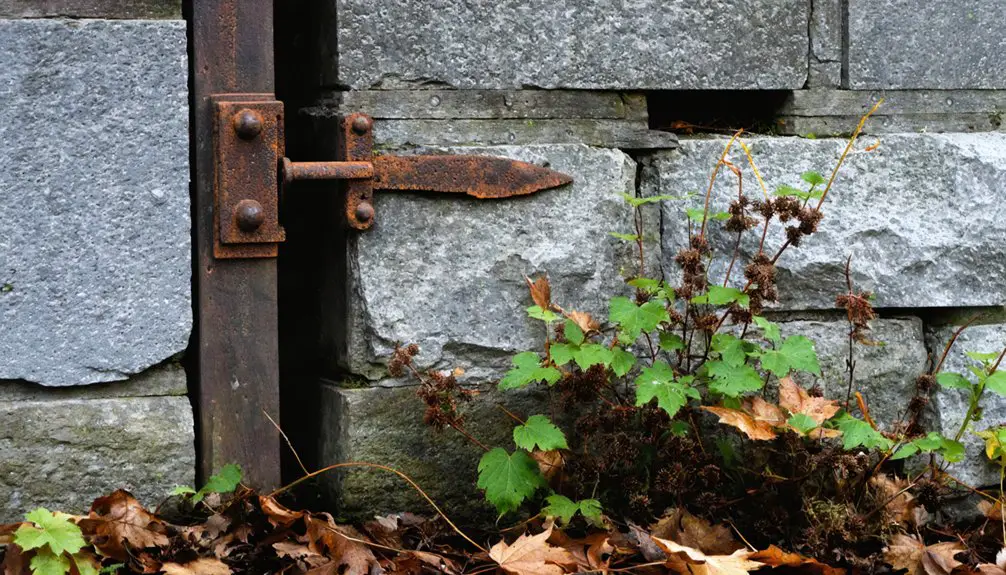After declaring independence from New York in January of 1777, Vermont functioned as an independent country for fourteen years before becoming the fourteenth state on March 4, 1791.
There are 126 ghost towns in Vermont. Being a small state of only 9,623 square miles and an official population of fewer than 650,000 people in 2019, it is surprising that there are so many ghost towns.
The state’s picturesque scenery inspired the French explorer Samuel de Champlain to come up with Verd Mont, which translates into English as the green mountain. It was 1647 when Verd Mont and the green mountains were first drawn onto Champlain’s map.
Vermont is the English version that we have now. There may be only seven ghost towns, but some of the stories feel as if they are straight from the ghost stories shared at summer camp.
Glastenbury, Vermont
Glastenbury, Vermont, did not have a comfortable existence. The area was first chartered in 1761 by former governor Benning Wentworth. Still, Glastenbury Mountain, where the town was located, was so unforgiving and challenging to reach that thirty years after being chartered, the population was only six. Nine years later, in 1800, the population reached eight, but those eight did not include any of the original six.
Despite the town’s unique and challenging location, new residents would continue to trickle in throughout the years and eventually reach 76. Still, the Vermont census showed a population drop to 53 in 1840.
Understanding that the town was set up in an isolated area with an increased elevation of 3,000 feet and 12 peaks to get through, it is surprising that it has ever reached a population greater than the original six. The site is still one of the most unique places in Vermont.
It was not until the 1850s when Glastenbury started receiving more attention as the forest area where the town was situated was viewed as having excellent potential for an enormous profit on lumber and coal.
After the Civil War, there was a considerable economic boost as more and more people and lumberjacks would move in to cut the trees and work the mills. It did not take long before the population reached nearly 250. The town now had a blacksmith, sawmills, kilns, general stores, a boarding house, a schoolhouse, and even a post office that operated from 1873 to 1878.
In the late 1880s, Glansbury Mountain had deforested most mature trees, and the economy took a significant dip. The railroad stopped operating in 1889, but the electric trolley meant to replace the railroad was open for business in 1894 to bring the town back to life through tourism as the town was converted into a mountain resort that opened in the summer of 1898.
That winter, enough snow created a spring thaw that flooded and wiped out the railroad entirely. What was supposed to be the new beginning of Glastenbury Resort ended up being the end of the town altogether. The number of residents who stayed in the town dropped to seven by 1937, when the town was unincorporated.
The abandoned spot where Glastenbury once stood was later known as one of the most haunted places in Vermont. Fascinatingly, the ghost stories are not that of previous residents that perished while living and working in the town but from mysterious disappearances; Adnaik Indians claimed a dark presence in the area that kept the tribe from hunting Glastenbury Mountain and even Bigfoot sightings.
In 1879, the first Bigfoot sighting took place and was reported on in the New York Times. In 1945, a 75-year-old man was the first to disappear, never to be seen again. The number of missing people is estimated to be around ten, with four disappearances happening within a five-year time frame while the individuals were hiking the mountain.
While it is unsure what is happening to those who disappear, local theories include Bigfoot, a cursed Indian stone, UFOs, unexplainable lights, and strange sounds and odors described by the settlers as eerie. In 1992, Glastenbury Mountain’s area was nicknamed “The Bennington Triangle” due to Bermuda Triangle similarities.
Lewiston, Vermont
The first settlers of Lewiston, Vermont, arrived in 1765, but it was not until 1767 that Dr. Joseph Lewis came, the man the town was named after. Lewiston was built around a rail station frequently used to transport coal to surrounding cities, including Norwich, Hanover, New Hampshire, and other New Hampshire areas. The rail station turned Lewiston into an important trading center for the region.
At its peak, Lewiston was the leading coal supplier to Dartmouth College in Hanover, New Hampshire. The town had several general stores, boarding houses, mills, a train station, and other successful businesses.
Once the oil was discovered, Dartmouth College switched from coal to oil, and Lewiston suffered a hard hit. By 1930, companies had closed, coal and lumber operations stopped, residents moved away, and the town started falling in line to become the next ghost town.
When the Wilder Dam was completed in 1950, Lewiston farm areas were flooded, followed by the town being razed in 1967 to make way for Interstate 91. All that was left was the railroad, rail station, Dr. Lewis’s house, and Lewiston Hill Road, which made up the old town center.
The railroad still exists today but is not used for its original purpose. Dartmouth University owns several buildings in the area where Lewiston used to be.
Smith Family Farms, Vermont
The Smith Family Farms is in Sharon, Vermont. Three homes belonged to the Mack and Smith families, one of the three being the home where Joseph Smith was born, the first Mormon prophet. The Church of Jesus Christ currently maintains the site.
A monument was erected in honor of the land, and a visitor center near the church has information on the families, homes, and other buildings.
None of the houses are still standing today, but the foundations can be visited by following a trail past the church to the site in the woods. The church will often decorate the grounds with Christmas lights, drawing many tourists and locals to view the beautiful winter scenery.
During Joseph Smith’s childhood, the family moved to upstate New York and started another Smith Family Farm. In 1818 or 1819, the Smith family built a log home near another property owner, Nicholas Evertson.
Joseph Smith Sr. did not have a valid land purchase agreement when the log cabin was built. It was not until 1820 a land agent was appointed to the area, and an agreement was made between Smith Sr. and Evertson of approximately $600 for 100 acres of land.
In 1825, the Smith family moved into a larger home that better suited the large family, but they were soon sued over unpaid costs owed to the carpenter who built the house. A sympathetic Quaker, Lemuel Durfee, purchased the foreclosed farm and allowed the Smiths to rent the property from him.
The Smith family returned to their log cabin in 1829 before leaving the area in 1830. The LDS Church bought the farm in 1907 and honored the site where Joseph Smith had his first vision in the grove of trees on the property.
Somerset, Vermont
In 1762, Somerset, Vermont, was an area of land granted to sixty-two people. In 1790, the town was established as a trading center to operate as a logging community and fulfill the northeast’s timber needs.
Somerset was built just a hundred yards off the river in the Deerfield River valley. Loggers would cut the trees upriver, transport the timber using the river current, then be processed in town, and finally moved by wagon to Bennington.
In 1850, the town had grown to over 300 people with multiple businesses, mills, and a large building used as a general store and post office. As commercial logging continued to grow and logging trucks and trains were utilized to transport lumber more efficiently, Somerset was bypassed and started to see its purpose finished. Those who lived in the town began to move out as work was becoming less and less.
In 1911, Somerset was being looked at for a future hydropower plant as the Somerset Dam was built and completed three years later. Unfortunately, the dam completion led to the town, mills, and railroad being submerged underwater for the new reservoir. The logging town was officially disenfranchised in 1937.
Today, the area is a free national forest campground. The remaining remains include stone cellar holes, home foundations, and a cemetery. The area is accessible by a forest service road that is often missed on the first try unless you know where it is or squint hard enough to see the small sign.
Once on Somerset Road, be prepared for a drop-down of an embankment, followed by a gravel-covered roadway, and into an area thick with forestation as the trail follows the Deerfield River.
Plymouth Five Corner, Vermont
Finding its beginnings as the small farming village of Saltash in 1787, the name was changed to Plymouth Five Corners. The community was known for its crops, cattle, chickens, and goats for the next seventy-one years. It was 1858 when the town triggered the Vermont Gold Rush after a Californian gold miner named William Henderson found gold in a brook that flowed through the town.
When the Plymouth Gold Mining Company established Plymouth Five Corners as its new home, the area became a hot spot almost overnight. A quartz mill was built along with a sawmill, gristmill, schoolhouse, boarding house, multiple hotels, general stores, saloons, a post office, and other businesses. The town was thriving in ways it had never seen before.
After the placer gold was mined from the creeks and the gold source was undiscovered, residents who had moved in started to find their way out without looking back. The town went back to the humble beginnings it came from until it was eventually abandoned. Nothing remains today except old stone cellar holes and footpaths used by those searching for gold.
Tyson Furnace, Vermont
Not far from Plymouth, Isaac Tyson established Tyson Furnace in 1835. Tyson was a mining expert who uncovered rich iron ore deposits in the Black River Valley, where the town was founded. He set up a mining operation in the valley and built Tyson Furnace as a place his employees could call home while working the mines. There were several furnaces in the town, aiding in the name choice.
There were also multiple mills, machine shops, hotels, boarding houses, schoolhouses, and general stores. Twenty years later, in 1855, Tyson decided to retire and stopped all mining activity in the town. In the 1860s, a Boston firm reopened the mines, but the operations were unsuccessful at continuing Tyson’s legacy when they learned the iron ore had been exhausted.
The mining operation was then closed permanently. After the final closure, most residents left the town. Not much is left of the town these days.



